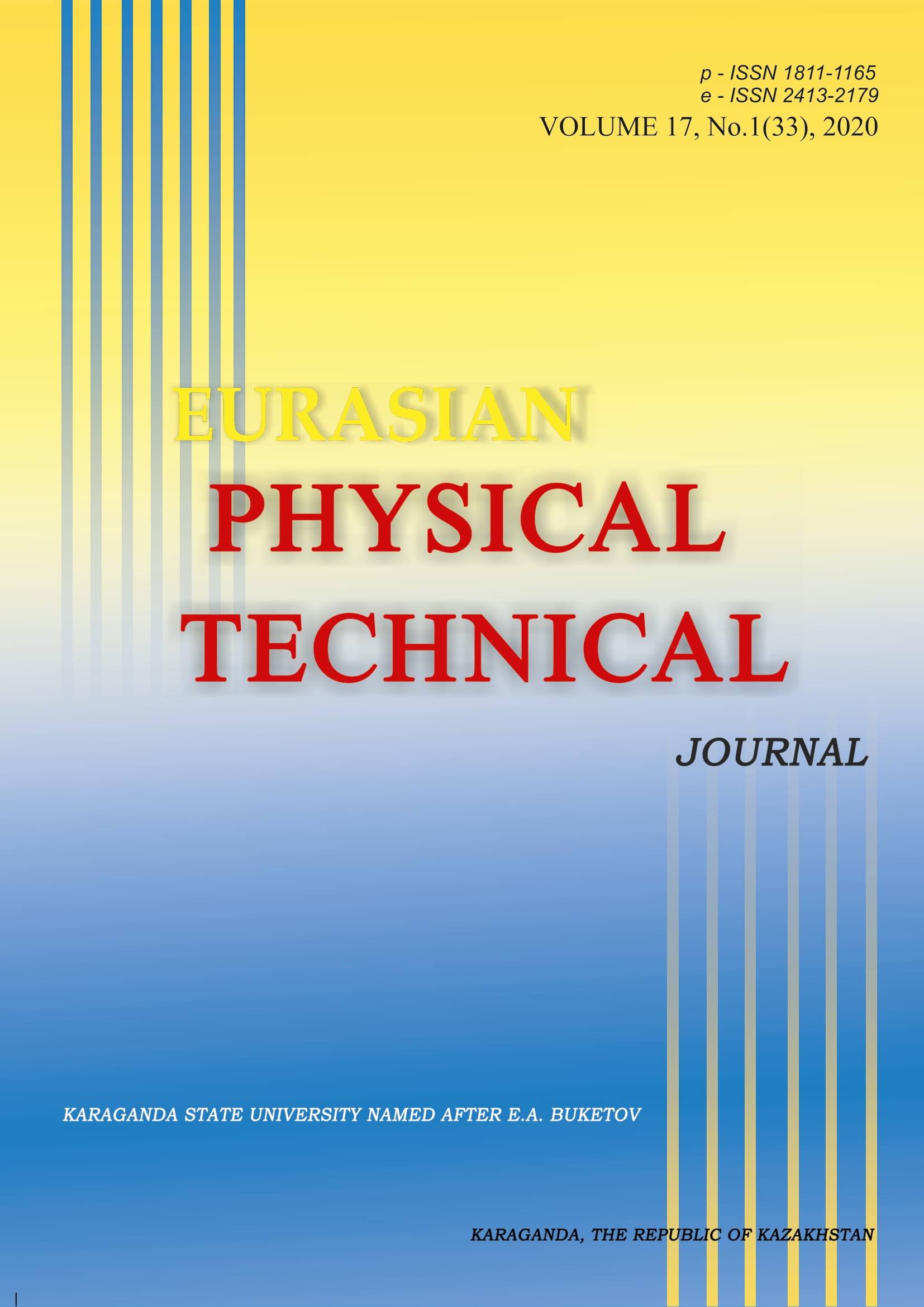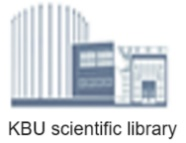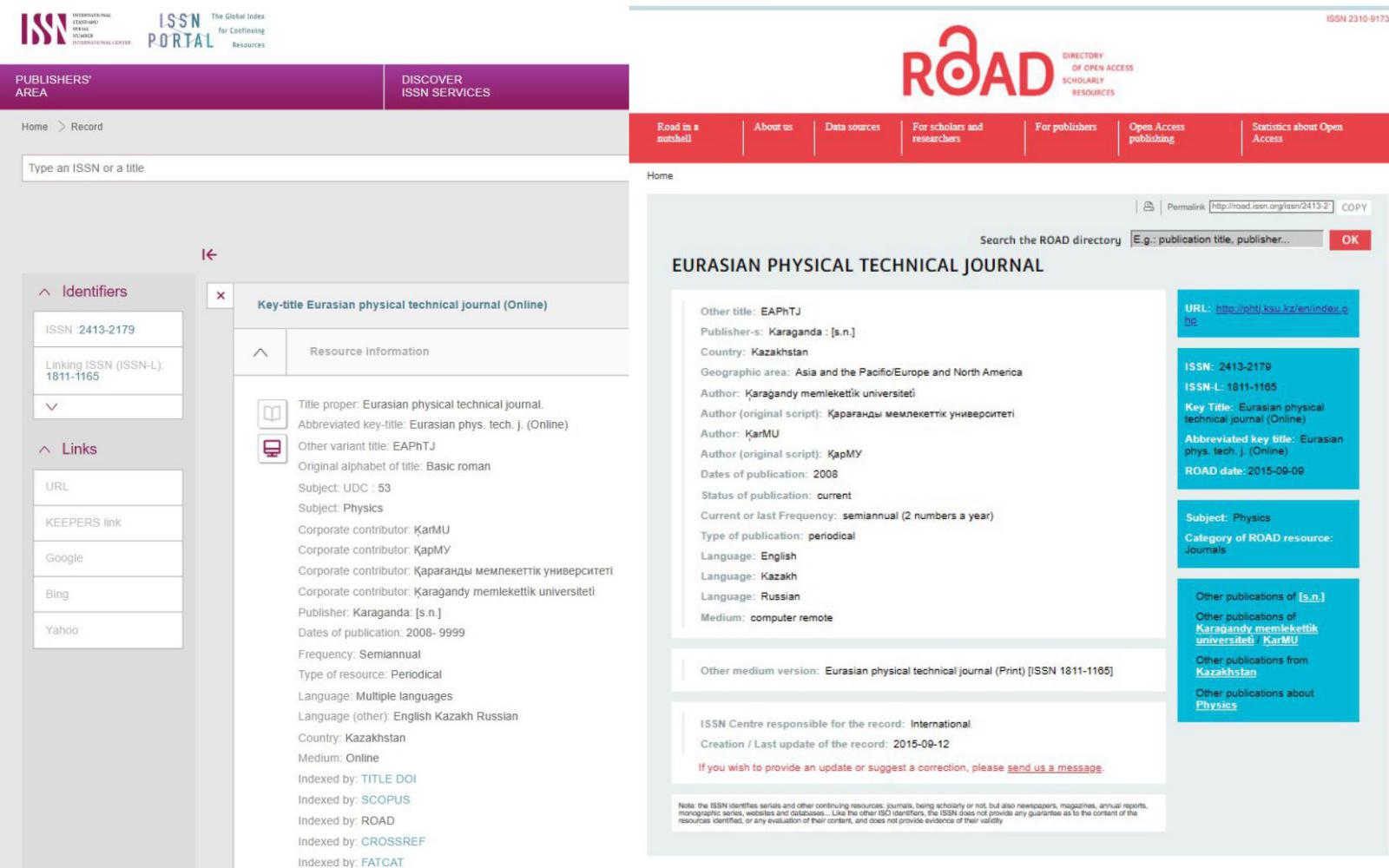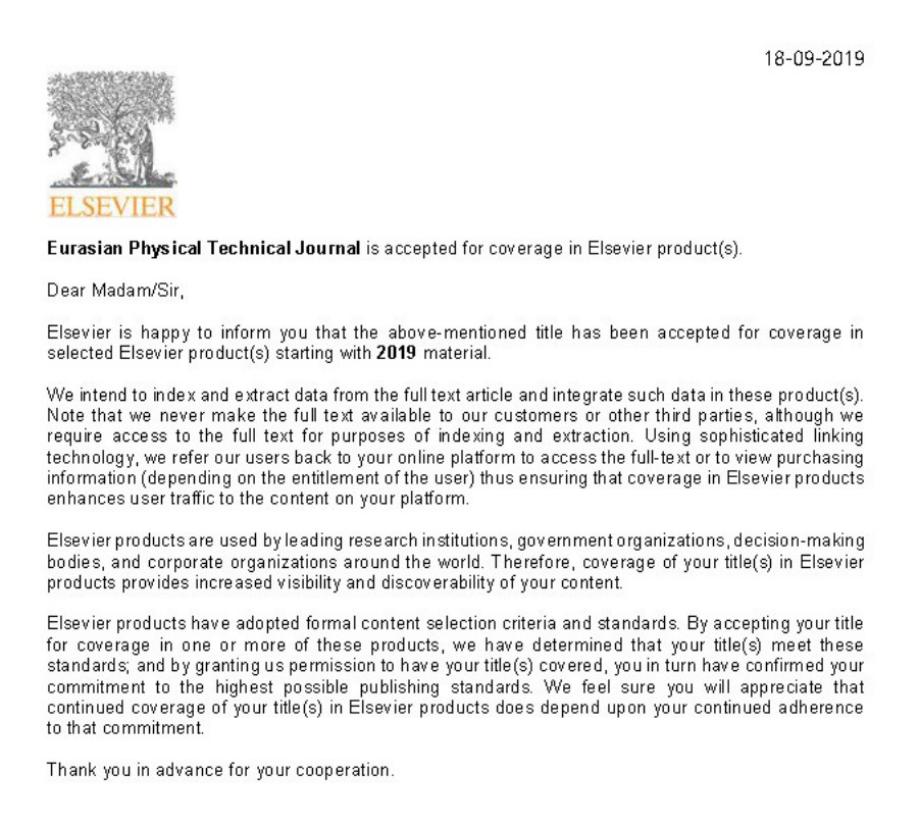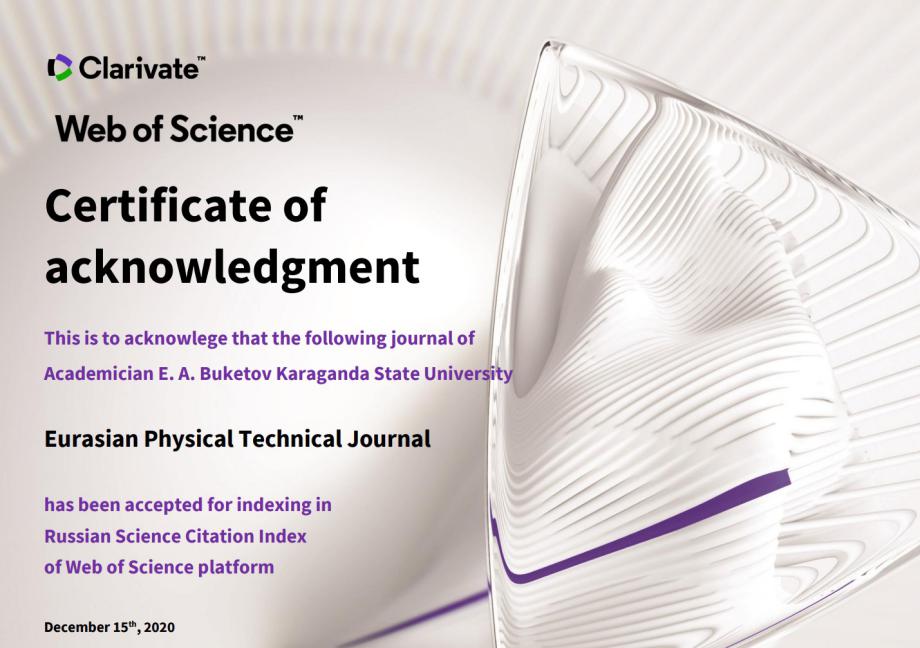ДЕТОНАЦИЯЛЫҚ ГАЗДЫ ТОЗАҢДАТУ РЕЖИМІНІҢ Ti-Si-C ЖАБЫНДАРЫНЫҢ ФАЗАЛЫҚ ҚҰРАМЫНА ЖӘНЕ АДГЕЗИЯЛЫҚ БЕРІКТІГІНЕ ӘСЕРІ.
DOI:
https://doi.org/10.31489/2020No1/59-64Кілт сөздер:
детонациялықтозаңдану, титан карбосилициді, болат, фаза, адгезияАңдатпа
Жұмыста детонациялық оқпанды жарылғыш ацетилен-оттегі қоспасымен толтыру көлемінің әр түрлі мәндерінде алынған Ti-C-Si негізіндегі детонациялық жабындардың фазалық құрамы мен беріктік сипаттамаларын зерттеу нәтижелері қарастырылады. Детонациялық оқпанды жарылғыш қоспамен 70% - ға дейін толтыру көлемін ұлғайғайтқан кезде негізінен TiC фазаларынан тұратынын көрсетті. Өйткені жоғары жылдамдықты соққы әсерінің нәтижесінде жоғары температураға дейін қыздырылған Ti3SiC2 ұнтағы TiC-ке ішінара ыдырайды. Рентгендік талдаудың нәтижелері 50% және 60% - ға жарылыс қоспасымен толтырылған кезде Ti3SiC2 төмен ыдырау дәрежесіне қол жеткізуге болады, жабындар негізінен Ti3SiC2 аз мөлшерде TiC фазаларынан тұрады. Детонациялық оқпанды жарылғыш ацетилен-оттегі қоспасымен толтыру дәрежесі ұлғайған кезде тозаңданатын ұнтақтарының қызу температурасы артады. Жабындар құрамындағы TiC фазасының көлемдік құрамының өсуі Ti-C-Si жабындысының қаттылығының азаюына әкеледі. Жабындардың адгезиялық беріктігін зерттеу нәтижелері детонациялық оқпанды жару қоспасымен толтыру көлемінің адгезиялық беріктікке әсері шамалы екенін көрсетті. Сонымен қатар, детонациялық әдіспен алынған Ti-C-Si негізіндегі барлық жабындар жақсы адгезиялық беріктікті көрсетті.
References
"1 Ulianitsky V., Shtertser A., Zlobin S., Smurov I. Computer-controlled detonation spraying: from process fundamentals toward advanced applications. J. Therm. Spray Technol., 2011, Vol. 20, pp. 791–801.
Ulianitsky V., Batraev I., Dudina D., Smurov I. Enhancing the properties of WC/ Co detonation coatings using two-component fuels. Surf. Coat. Technol.2017, Vol. 318, pp. 244–249.
Murthy J. K. N. & Venkataraman B. Abrasive wear behaviour of WC–CoCr and Cr3C2–20(NiCr) deposited by HVOF and detonation spray processes. Surface and Coatings Technology, 2006. Vol. 200, No.8, pp. 2642–2652.
Ulyanitsky V.Y., Nenashev M.V., Kalashnikov V.V.,et al. Experience in research and application of detonation coating technology. Bulletin of the Samara Scientific Center of the Russian Academy of Sciences, 2010 Vol. 12, No. 1 (2), pp. 569-575.
Batrayev I. S., Prokhorov E. S., Ulyanitsky V. Y. Acceleration and heating of powder particles by gas detonation products in channels with a conical transition. Combustion and Explosion Physics, 2014, Vol. 50, No. 3, pp. 78-86
Nikolayev Y. A., Vasiliev A. A., et al. Gas detonation and its application in engineering and technology (review). Combustion and Explosion Physics, 2003, Vol. 39, No. 4, pp. 22–54.
Dudina D.V., Batraev I.S., Ulianitsky V.Yu., Korchagin M.A., Possibilities of the computer-controlled detonation spraying method: a chemistry viewpoint. Ceram. Int., 2014, No. 40,pp. 3253–3260.
Ulianitsky V., Shtertser A., Zlobin S., Smurov I., Computer-controlled detonation spraying: from process fundamentals toward advanced applications. J. Thermal Spray Technol., 2011, Vol. 20, pp.791–801.
BarsoumM.W. MAX-phases: Properties of machinable ternary carbides and nitrides. Wiley, 2013. 436 p.
Sun Z. M. Progress in research and development on MAX phases: a family of layered ternary compounds. Int. Mater. Reviews.2011, Vol. 56, pp. 143–166.
Sonestedt M., Frodelius J., Palmquist J. P., Högberg H., HultmanL., Stiller K. Microstructure of high velocity oxy-fuel sprayed Ti2AlC coatings. J. Mater. Sci., 2010, Vol.45, pp.2760–2769.
Buitkenov D., Rakhadilov B., Erbolatuly D.,Sagdoldina Zh. Influence of Heat Treatment on the Phase Composition and Microhardness of Coatings Based on Ti3SiC2/TiC, Key Engineering Materials, 2020, Vol.839, pp. 137 – 143.
Useinov A. et al. Investigation of properties of thin coatings in dynamic mode mechanical analysis using a scanning nanohardometer ""NanoScan-4D"".NANOINDUSTRY, 2016, No. 1, pp. 80-87.
Trache R. Puschmann R., Leyens C., et al. Thermally sprayed Ti3SiC2 and Ti2AlC MAX-phase coatings. Proceeding of the Int. Thermal Spray Conf., ASM International, 2013, pp. 74–78.
Barsoum, M.W., El-Raghy T., Rawn C.J., et al. Thermal properties of Ti3SiC2. J. Phys. Chem. Solids., 1999, Vol.60, pp. 429–439
Zhou Y., Gu W.: Chemical reaction and stability of Ti3SiC2 in Cu during high-temperature processing of Cu/Ti3SiC2 composites, Z. Metallkd, 2004, No. 1(95), pp. 50 – 56.
Barsoum M. W. The MN+1AXN phases: A new class of solids: Thermodynamically stable nanolaminates. Prog. Solid St. Chem., 2000, Vol. 28, Issues 1–4, pp. 201 – 281.
Barsoum M. W., El-Raghy T., Radovic M.Ti3SiC2: a layered machinable ductile carbide: Interceram., 2000,No. 49(4), pp. 226-223.
Rakhadilov B.K., Buitkenov D.B., Tuyakbaev B.T., Sagdoldina Zh.B., Kenesbekov A.B. Structure and properties of detonation coatings based on titanium carbosilicide. Proceeding of the 9th International Conference on Key Engineering Materials. Oxford, United Kingdom, 2019, pp. 301 – 306.
ShtanskyD.V., PetrzhikM.I., BashkovaI.A., et al. Adhesion, friction, and deformation characteristics of Ti− (Ca, Zr) - (C, N, O, P) coatings for orthopedic and dental implants. Solid State Physics, 2006, Vol. 48, No. 7, pp. 1231 – 1238.
Andrievskii R. A., Spivak I. I., Strength of refractory compounds and materials based on them. Guide. Metallurgy, Chelyabinsk, 1989, pp. 368. [in Russian]
"

